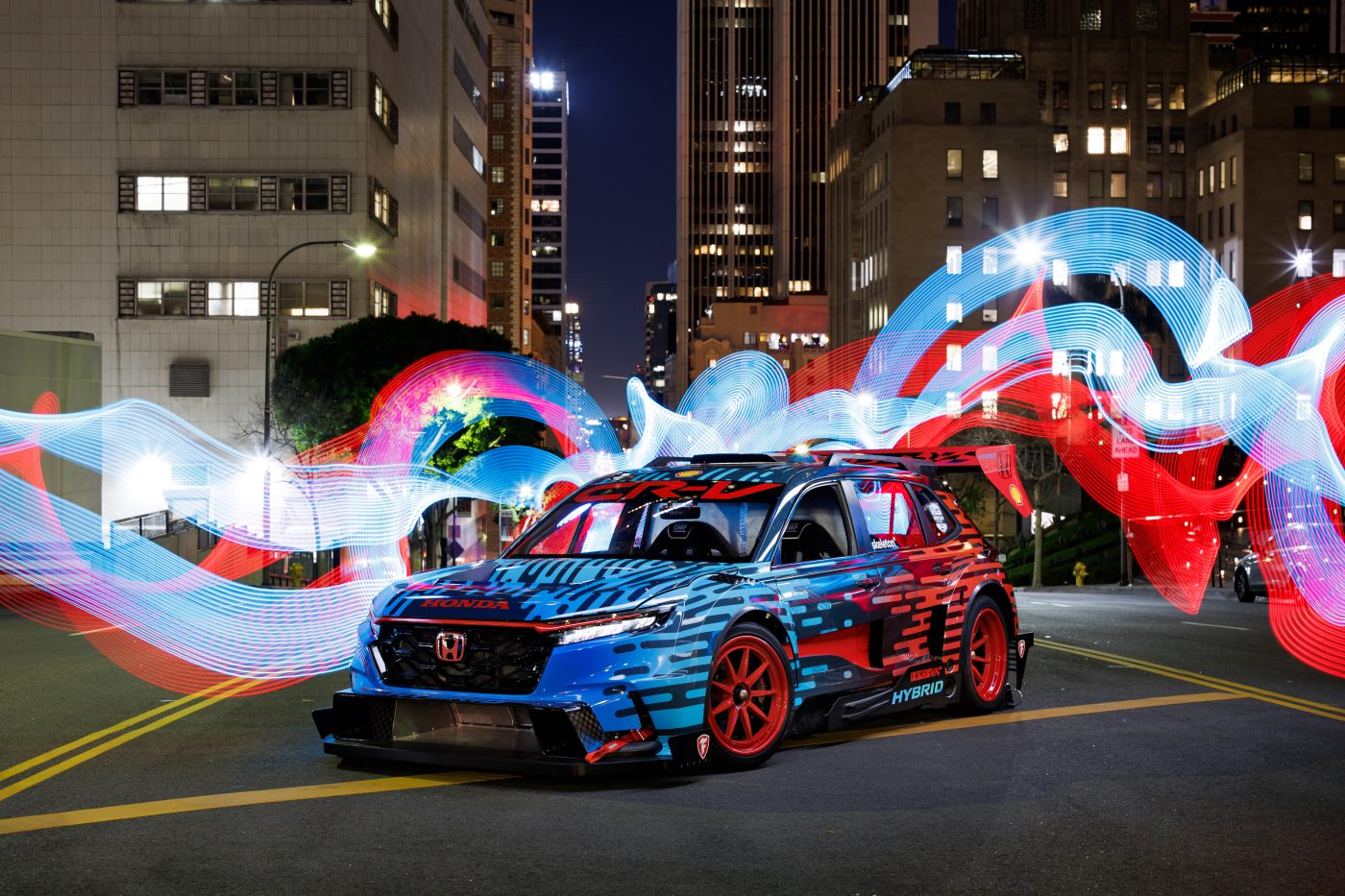If you like Podium Life’s tagline of “we’re here to capture the cool in motorsports”, then this feature is definitely for you.
Honda has put an 800bhp hybrid IndyCar engine in the back of a CR-V SUV it’s called The Beast, and it was driven by F1 champion Max Verstappen last week.
There’s a history of this sort of thing happening in motorsport, like the famous Ford Supervan or Renault Espace F1. Taking a relatively normal looking vehicle, giving it a wild engine and bodywork and taking it to the people.
With 800bhp, the front end from a Honda NSX GT3 race car and the rear from an IndyCar, and a lot of the time with James Hinchcliffe driving it, The Beast is one of the most exciting machines launching in 2023.
It’s also been modelled on a Group B rally monster, with aero vanes and flicks, inlets, an enormous spoiler that would look more at home in the Cars Disney movies and a radical black, blue and red paint scheme, the thing is just unforgettable.
The engine in the CR-V has the hybrid unit IndyCar will use next year, so the purpose of the car was always to showcase IndyCar technology to new and existing fans.
One of the interesting ways Honda in particular can do this is through its car culture roots.
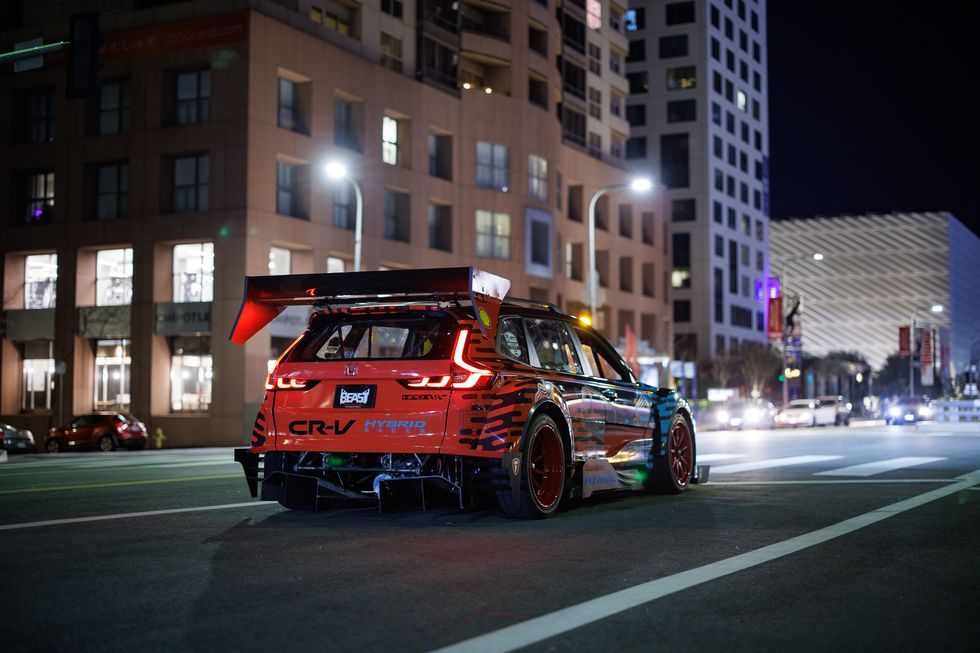
“IndyCar is some of the best racing on the planet,” Honda Performance Development President David Salters tells Podium Life.
“Can we show that to a wider audience?
“People who have always watched racing are going to watch racing and that’s great. We love those fans, we owe them so much for supporting what we do.
“But what can we do to take it to a younger generation, a different generation, a car-culture generation. So that was another reason behind this, to get the car out there and activate to a wider audience. People who just like cars!
“Honda, especially in the US, is embedded in car culture. Tuning, styling, that’s where a lot of its popularity came from.
“Efficient cars that are great to drive and people really celebrate that. You can see some wild Hondas out there that are awesome.
“We’re in that and have been in that for a long time and it’s nice to celebrate that.”
Of course, this machine is a big, fire-breathing marketing tool, but it’s so much more than that. It shows manufacturers still want to build racing cars people like and use them to promote the series they race in.
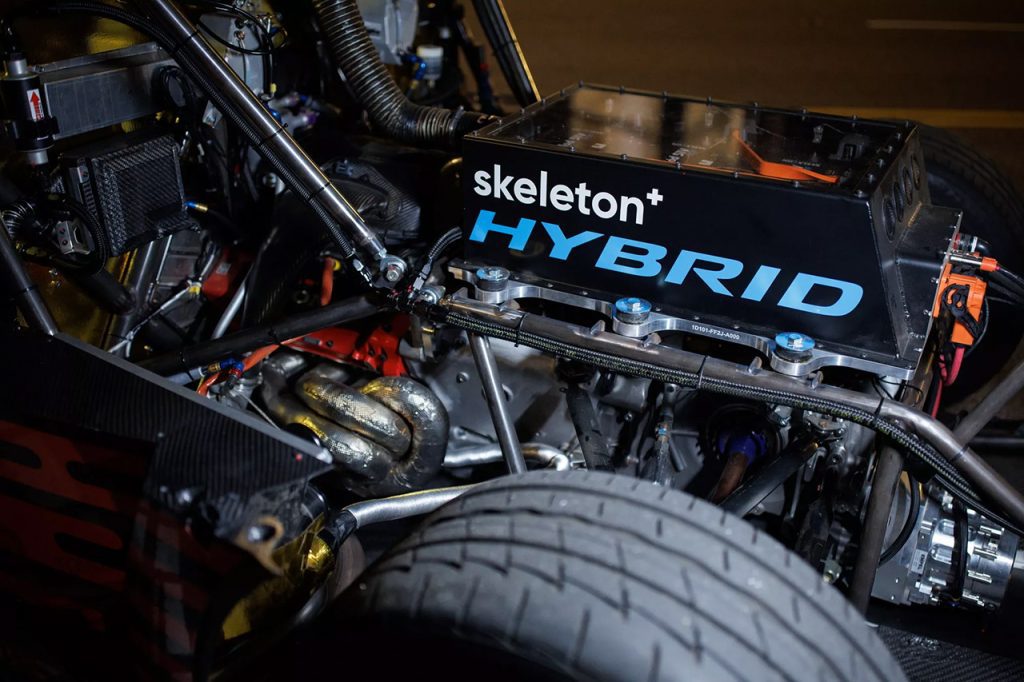
And this kind of unbridled letting loose of creativity, giving your staff a blank sheet of paper and seeing what they create has led to some of racing’s coolest cars over the years.
Many HPD personnel have given up their own personal time to finish this project and it’s not just engineering and bodywork – simulation has been a big part of getting the handling of the car right and joined multiple departments in this refreshing challenge.
Wild projects like this don’t happen enough, and now Honda has two with its Ridgeline Pickup that also has an IndyCar engine in it, built by the Hoonigans.
What is it like to ride in?
Lucky for you, Podium Life had one of the first passenger rides in The Beast with Hinchcliffe at St Petersburg, a place where he had won before in IndyCar.
After being strapped in, we role out onto the track and – rather than the roar of the engine and burning tires that’s normal in a current IndyCar start – the Beast just lurches straight to around 40mph with not more than a whine of the hybrid unit.
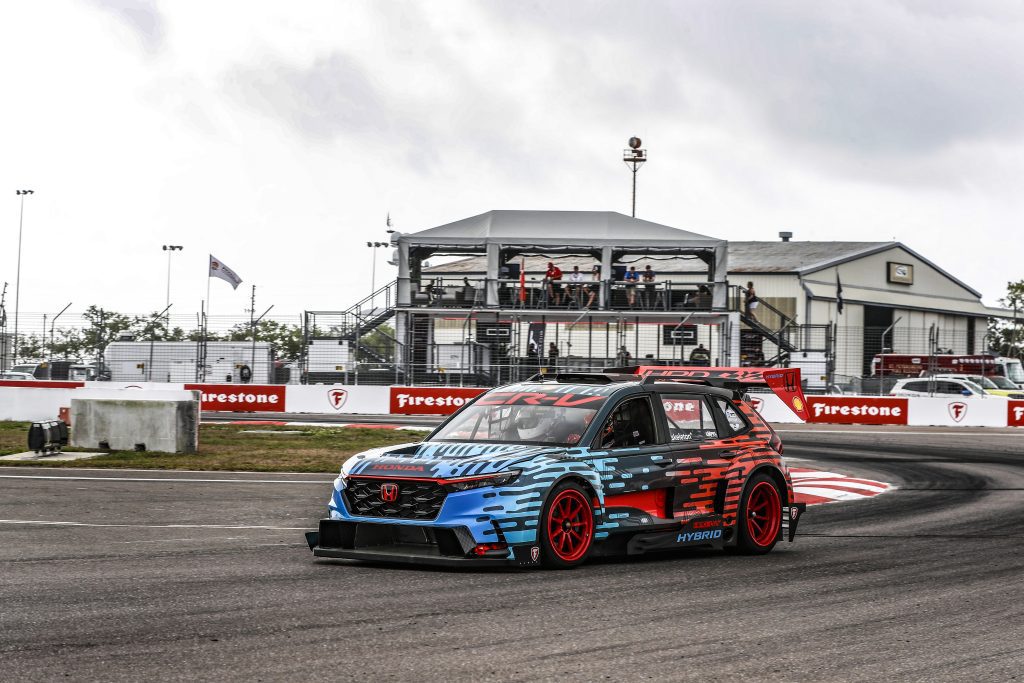
Then Hinch presses some buttons and the engine roars into life, having been dormant while the car rolls out on the hybrid.
The ferocity of the engine kicking in while moving stirs something primal in your gut, like you’re riding some sort of mythical monster.
Luckily Hinch is the perfect person to tame it, and he’s immediately throwing the car against the walls so close that I could touch them if the window net wasn’t there.
“You definitely miss the big smokey burnout leaving pitlane which is such a signature of driving an IndyCar these days,” Hinch tells Podium Life.
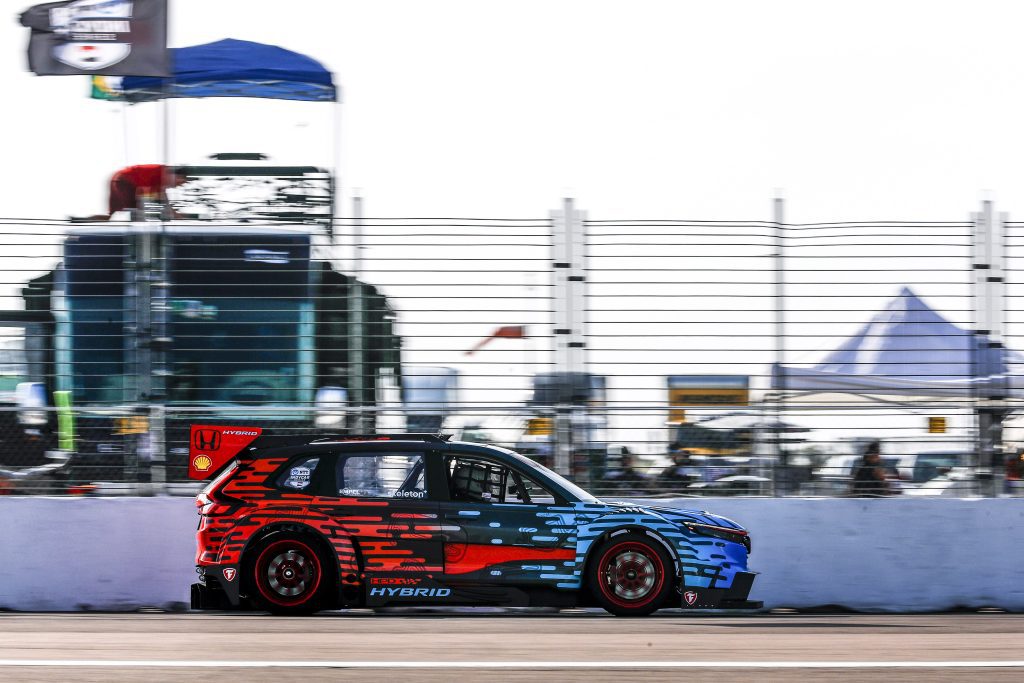
“Sure enough you flip the right switches and press the right buttons and boom, this incredible IndyCar engine fires to life, from about 30mph on the hybrid motor. It’s amazing.”
Despite it being a two seater unlike an IndyCar, and being much heavier, the car’s still remarkably agile and the road car tires mean it’s moving around.
It’s less precision racer – like it would be on slick tires – because the road tire allows some movement. Not as fast as on slicks, but more fun as you can feel what the car is doing through your butt.
“When you think you’ve got street tires and a 800bhp engine in the back, I was almost expecting to never be able to hit full throttle.
“It actually handled it very, very well.
“The two big things that you notice is it’s a lot heavier and there’s a lot more weight higher up.
“You’re not sitting as low, you have a roof, certainly much higher from a centre of gravity standpoint than on an IndyCar.
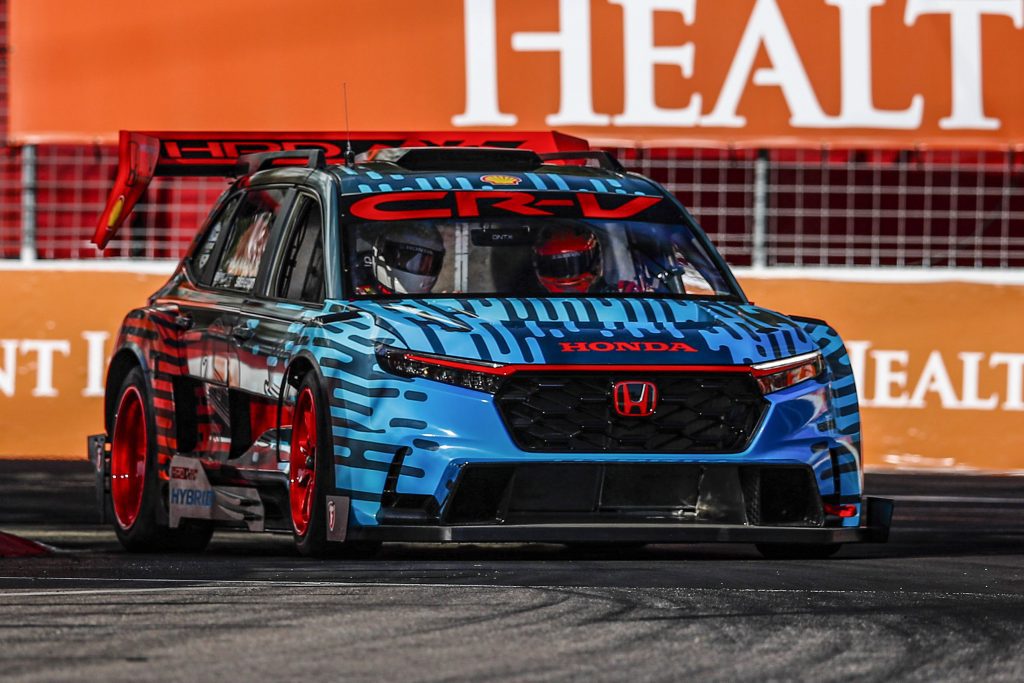
“Everything is really just the transition of the weight. Certainly the left-right combinations going from Turn 1 to 2 to 3, or the fast chicane through 11 and 12 there, you really notice it just takes that bit longer to happen and you have to sort of wait for the weight to load up on the tire before you can add additional input.
“But it’s not any different than going from an open-wheel car to a sports car or touring car.
“So I think they did a real good job of making it feel like a real racing car.”
It’s limited on the straights while Honda suss it out, this being its first weekend of running, but that doesn’t take away just how quickly it accelerates.
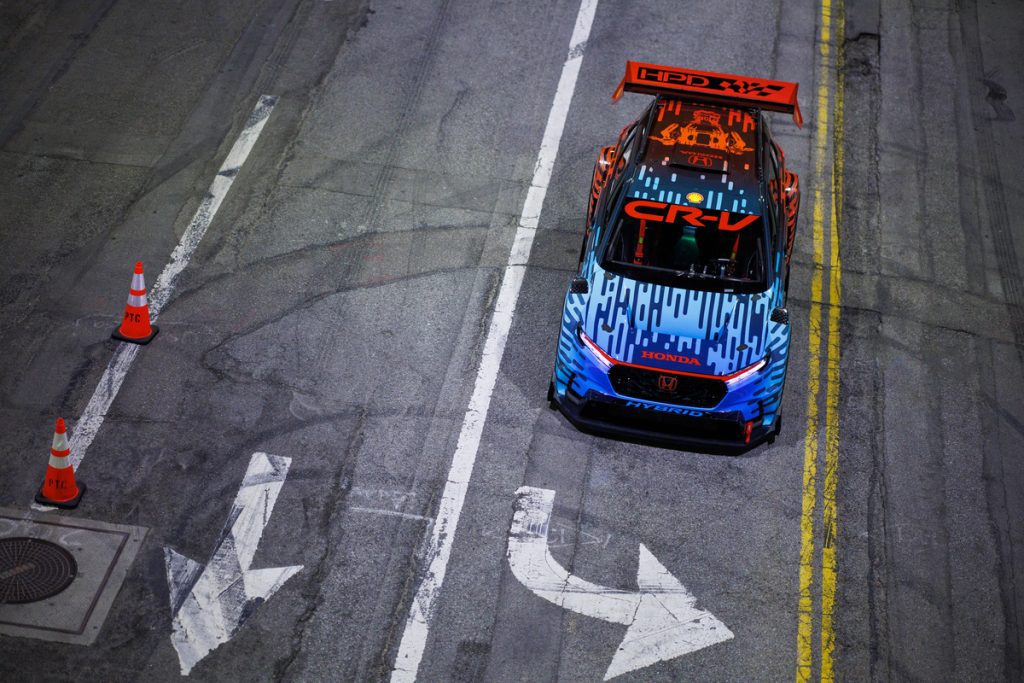
Pulling back off the track, it feels like a connection to a bygone age of motorsport where things were less precision and more brute force. That’s not to criticise either era, but this is every bit The Beast, and watching it being tamed is all the more satisfying.
If you’re desperate to get out and see it for yourself, keep an eye on HPD’s social media pages as they will bring it to multiple road and street courses this season.
And one more thing, it’s running on IndyCar’s new 100% renewable Shell fuel, giving it even more technological significance to you and me.
